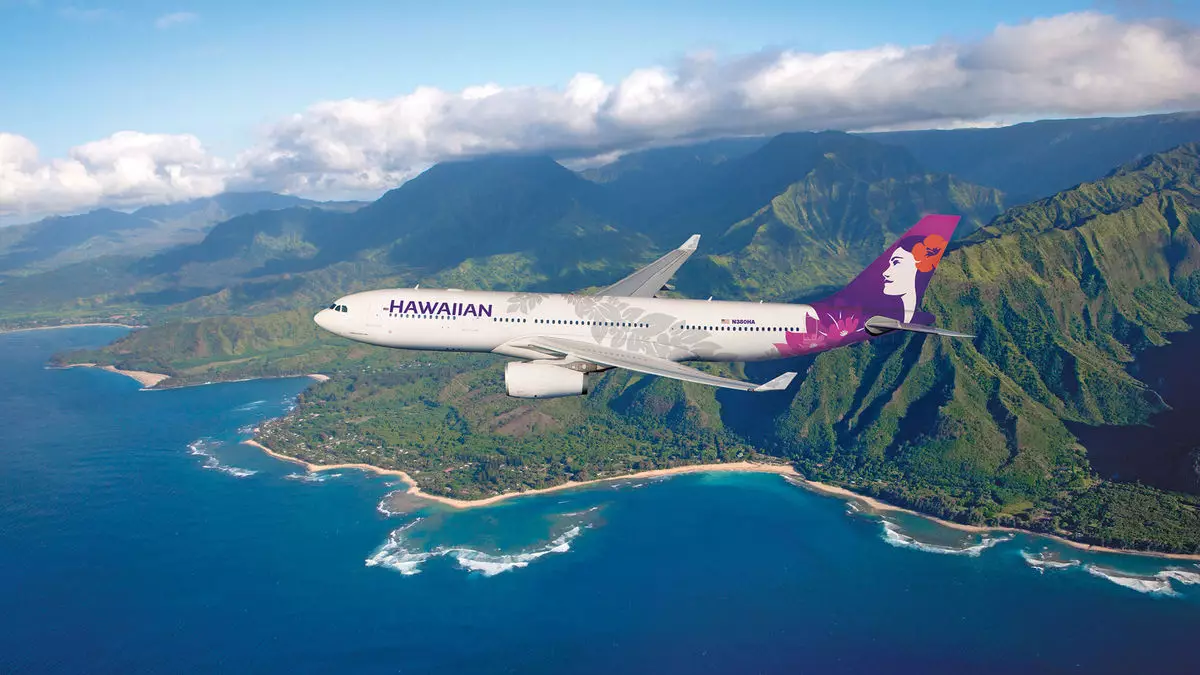The recent union of Alaska Airlines and Hawaiian Airlines under the Alaska Air Group umbrella marks a pivotal transition in the aviation sector. For Hawaiian Airlines, this merger signifies a rescue from the precarious financial situation that has plagued it since the COVID-19 pandemic and the catastrophic Lahaina wildfires. Four years have elapsed since Hawaiian Airlines last saw profitability, and the brand’s struggles highlight the ongoing volatility in the aviation market.
As Hawaiian Airlines integrates with Alaska Airlines, it gains access to a more robust balance sheet—an essential buffer against the unpredictable nature of the airline industry. According to analyst George Ferguson from Bloomberg Intelligence, this capitalist overture is not primarily aimed at economies of scale or significant consolidation but is a lifeline for Hawaiian’s financial health. By becoming part of a more profitable entity, Hawaiian Airlines is positioned to stabilize its operations and possibly expand its offerings.
One of the most immediate advantages of this merger is the enhanced flight options available to travelers. Previously, residents and visitors to Hawaii faced difficulties when trying to connect to the mainland U.S. Often relying on separate airlines for their journeys created logistical challenges. With Alaska Airlines’ acquisition, travelers can anticipate a seamlessly integrated network, allowing for a more efficient travel experience across various destinations. Airline industry analyst Brett Snyder emphasizes that Hawaii-based customers will now enjoy broader access to numerous locations in the continental U.S., enhancing their travel flexibility significantly.
In the longer-term perspective, this merger may pave the way for innovative routes and services. Snyder foresees Alaska Airlines venturing into its inaugural transoceanic flights from Seattle. This expansion reflects Alaska’s ongoing ambition to optimize short-haul routes while capitalizing on the newly acquired fleet of widebody aircraft from Hawaiian. However, such growth will require strategic planning and execution as the airline navigates the complexities that accompany this diversification.
Yet, with these opportunities come notable challenges for Alaska Airlines. Historically, the airline has been recognized for its operational efficiency, primarily operating a fleet of narrowbody Boeing jets. The acquisition of Hawaii’s mixed fleet—including both Boeing and Airbus aircraft—will undoubtedly test Alaska’s capacity to maintain its cost-effectiveness. Ferguson warns that the complexity introduced by this wider array of aircraft could strain Alaska’s operational capabilities. The timeline of success will largely depend on how effectively Alaska Airlines can integrate Hawaiian’s assets without incurring prohibitive costs.
The partnership between Alaska and Hawaiian Airlines heralds a new chapter for both companies. While the merger presents vast opportunities for growth and enhanced customer service, it also introduces complexities that must be navigated with care. As the airline industry continues to evolve, the success of this collaboration will serve as a testament to how strategic mergers can foster resilience and innovation amid ongoing Market challenges. Alaska Airlines and Hawaiian Airlines are poised to not only survive but thrive in the competitive aviation landscape, setting new benchmarks for the future.

